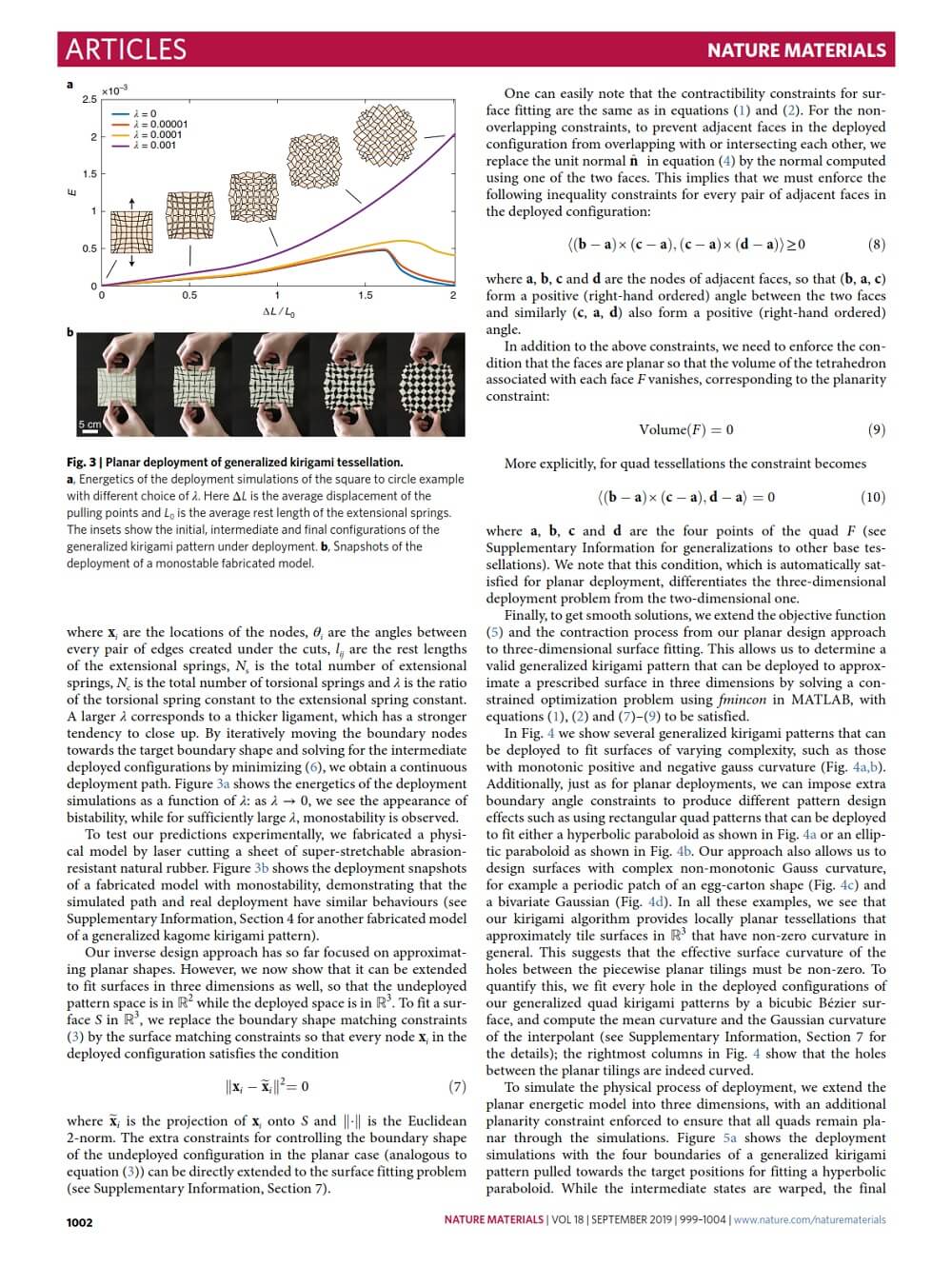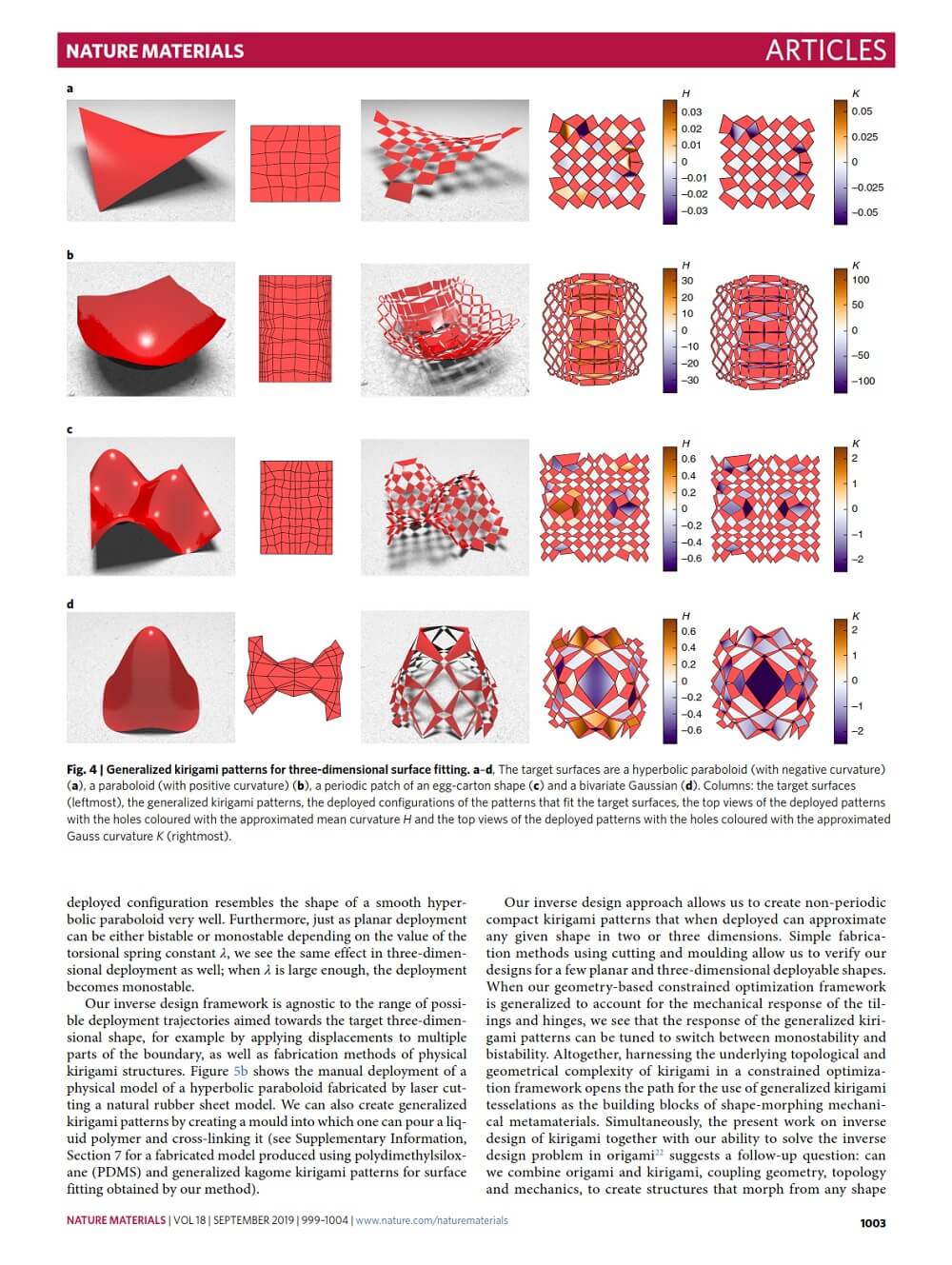Kirigami Tessellations

Kirigami tessellations, regular planar patterns formed by partially cutting flat, thin sheets, allow compact shapes to morph into open structures with rich geometries and unusual material properties. However, geometric and topological constraints make the design of such structures challenging. In this article by Gary P. T. Choi, Levi H. Dudte & L. Mahadevan, authors pose and solve the inverse problem of determining the number, size and orientation of cuts that enables the deployment of a closed, compact regular kirigami tessellation to conform approximately to any prescribed target shape in two or three dimensions. They first identify the constraints on the lengths and angles of generalized kirigami tessellations that guarantee that their reconfigured face geometries can be contracted from a non-trivial deployed shape to a compact, non-overlapping planar cut pattern.

They then encode these conditions into a flexible constrained optimization framework to obtain generalized kirigami patterns derived from various periodic tesselations of the plane that can be deployed into a wide variety of prescribed shapes. A simple mechanical analysis of the resulting structure allows to determine and control the stability of the deployed state and control the deployment path. Finally, they fabricate physical models that deploy in two and three dimensions to validate this inverse design approach. Altogether, this approach, combining geometry, topology and optimization, highlights the potential for generalized kirigami tessellations as building blocks for shape-morphing mechanical metamaterials.





























Comments